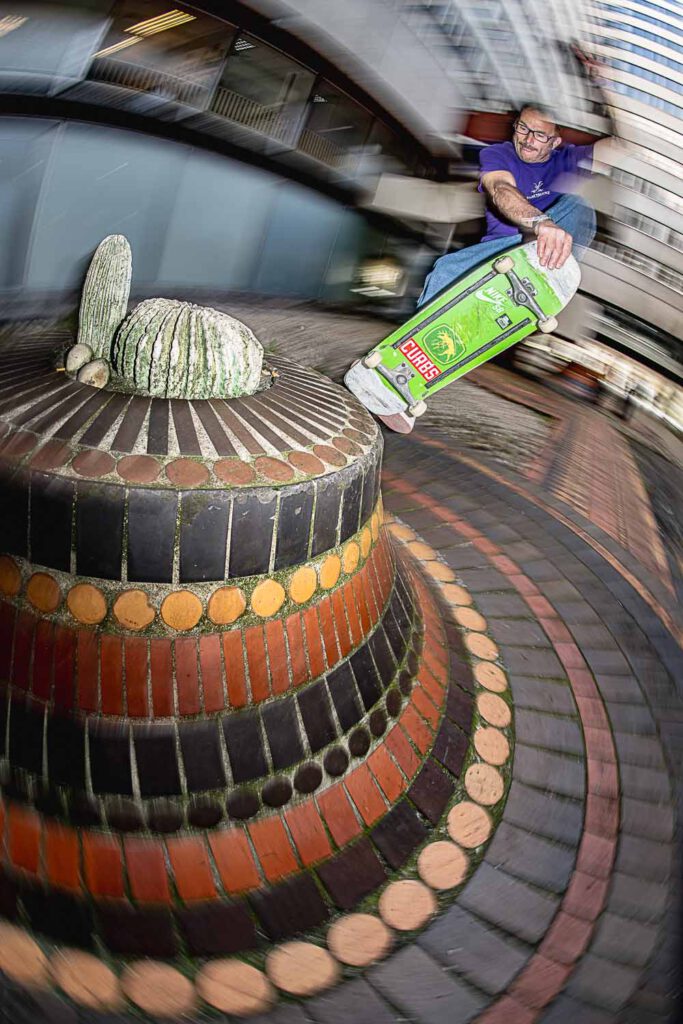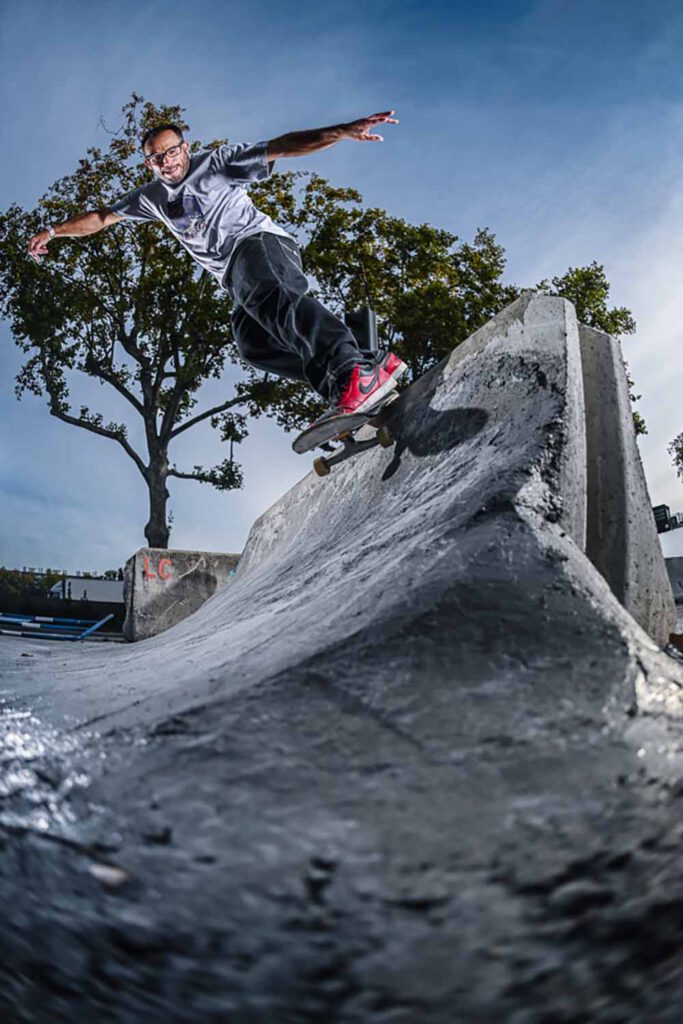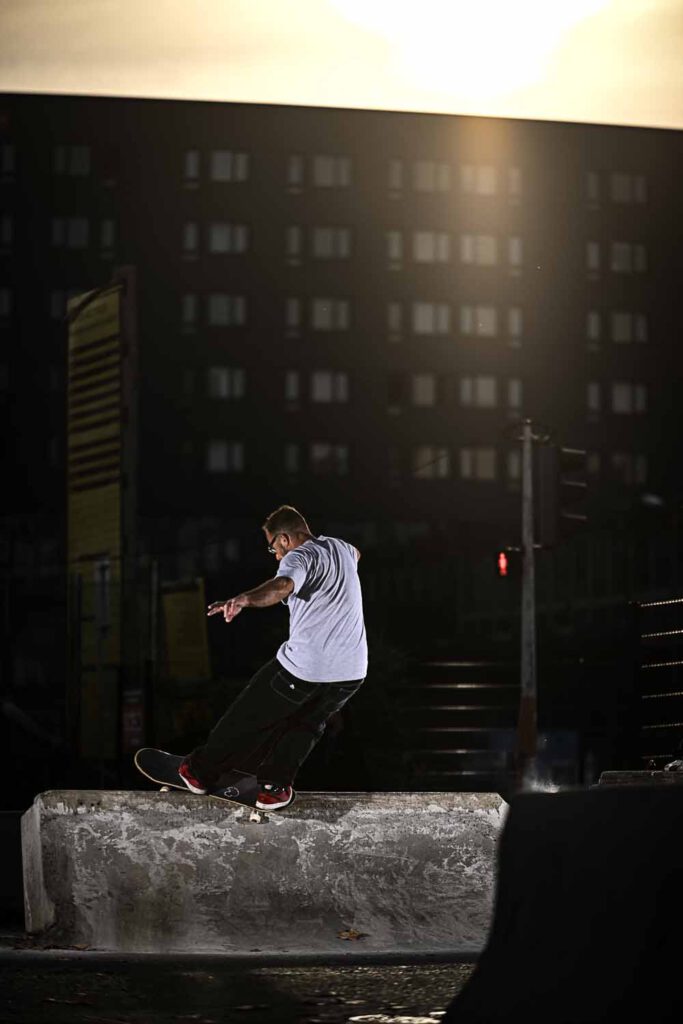If you started skating after 2010, chances are you might have never heard of Cliché. However, the French Lyon-based company founded by Jérémie Daclin in 1997 is responsible for the emergence of some of today’s favorites such as Lucas Puig, Flo Mirtain, Max Geronzi or even Kevin Bradley. Hell, even Pontus Alv was a part of it at some point!
Initially started in reaction to an all-American centralized industry, the brand quickly grew from its modest beginnings to being the top elite euro brand. With the success of videos like Bon appétit and Freedom fries, directed by the infamous French Fred, the company eventually gained recognition on an international scale and even ended up being awarded Best team at the TransWorld annual award ceremony in 2006.
Cliché paved the way for European brands wanting to make it out there by casting the spotlight on Europe, long before the internet and social medias started blurring the borders of a now instant globalized world. Present time Sour, Polar or Palace, just to name a few, all owe something to the French precursor.
In 2016, a few years after being bought by Dwindle Distribution, the information that the company was put to an end came as a shock for many of us. The market at the time was still recovering from the financial crisis of 2008, and Cliché was no exception. Now that most of its former riders relocated more or less successfully, and Jérémie Daclin is on its way to change the trucks business, we felt like it was the right time to revisit the rich history of Cliché, told by the ones who lived it first hand.
Intro and interview by Arthur Bouet, photos by Loïc Benoit

„YOU REALLY HAD TO GO TO THE USA TO MAKE A CAREER. AND THAT’S KIND OF WHY I MADE CLICHÉ“
What strikes me is that even though you started by being sponsored by American companies, you never fully gave a shot at « making it » in the USA. Did you always have the idea of working within the skateboard industry, or making something in Europe?
In fact, what you need to know is that seen from France, the skate business didn’t exist in the sense that there were very few stores, very few media… You couldn’t project yourself when you were 20 years and be like „I will work in skateboarding“. It didn’t really exist. Or you could set up a store – and that’s what I did – because basically I was „professional“ in 1994/95, but it was impossible to make a living from it while staying in Europe. That’s why I created a skate shop called All Access.
Is it the experience of dealing with American brands from abroad that planted the seed for the idea of starting a board brand of your own, in France?
I was going to the USA, I was going back and forth, but I didn’t really want to settle there to make a career. And at the time, skateboarding was really Californian, and there was only one counterexample and that was Zoo York, developing its own thing in New York. But to exist in skateboarding, you had to go to the USA. For example Chany Jeanguenin, a Swiss pro, went to settle in the United States, JB was going there a bunch… You really had to go to the USA to make a career. And that’s kind of why I made Cliché.
Was there also a political aspect in it, wanting to keep the money in Europe and grow the industry there? I know you also helped other brands to launch, such as Antiz skateboards for example.
In fact, I had seen the “pro skater” side, and I had had the experience of the store where we only consumed American products, and that money went back to the United States. People who had a store were only distributors, the industry didn’t really care about skateboarders in Europe. For example, I was the first with Cliché to give photo incentives, that did not exist before. You had a photo with a logo and it was lost in the wind. And that’s the kind of thing that made me realize that a European industry was really needed, so that riders could live off it and reap the benefits of their efforts. And my basic principle was always that the more of us there were, the more European industry developed, the more we were going to be taken seriously. It was beneficial for everyone.

Where were the boards produced at the beginning? I assume there couldn’t be many options besides America at the time.
There was no factory in Europe indeed, so yes they were all made in the United States.
Who were the first team riders? It seems like it quickly was a really diverse european team.
I traveled a lot. A stupid thing is that, actually, while traveling you met people, you made networks of friends, you saw new faces… It was a bit like Facebook at the time! And so I had friends from everywhere, in Switzerland, in Spain, and so really it was the goal from the start to do something European.
Europa, the first video was pretty much a statement right? I feel like it hit pretty hard, even the American market.
The goal was also to say that things were happening in Europe. And at that time there was a boom in Europe, in the early 98/99/2000s. You had the Puzzle videos which were a video magazine on Europe, all the Americans who came more and more to film… There was the Menikmati which had been filmed a lot in Europe, there were lots of things going on… And therefore, Europa was one of the first videos of a small independent French brand. At the time Fred Mortagne was filming with people like Rodrigo Teixeira or Arto Saari in Spain, in Barcelona, in Lyon too, and our video showed that unknown Europeans could do almost the same tricks as American pros, at the same spots. It was kind of the start of it all. But to go back to your question, it was a really striking video yeah, totally.

„OUR VIDEO SHOWED THAT UNKNOWN EUROPEANS COULD DO ALMOST THE SAME TRICKS AS AMERICAN PROS, AT THE SAME SPOTS„
At what point did it feel like you were an established brand?
It doesn’t come like that, but it’s true that after Europa, yes, we had distributors for the video in the United States, for example. And at the time there was no internet, so you couldn’t receive, you were less aware of the impact of things. Now it’s immediate, you do something, you see it with the number of clicks, the number of likes, you quickly see the impact. But for Cliché at the time it took longer. And above all, there were far fewer video projects. There were 4 or 5 full-lengths a year, if so. Now you have one video per day. Things were more thought out and it was videos that stood out, there was a common base. That is, everyone saw the same things. As in the 2000s, everyone had seen Bon appétit. Today you talk about the video that came out the day before yesterday, not all the skateboarders in the world have seen it. It’s like the photos, there are photos of Lance Moutain and Tony Hawk which are legendary, the photos of Britain, everyone has seen them, everyone knows them. Today with the internet, if you skate like this you follow guys like that, if you like a certain type of skate you look at this website and so. And you no longer have this common base thing.
Is it around the samed period Cliché was bought by Salomon?
They are the ones who approached me. What you need to know is that in Europe, there are lots of small countries. And a brand to really grow, it must sell on its domestic market, because that’s where you have the biggest margins. And in the USA, they have the advantage of having a big domestic market and therefore there are brands that are much bigger than you would imagine, but which only sell in the USA. France, as a French brand, you level off quickly. Cliché was starting to be very well known, there were a lot of requests, but not enough money to produce the number of boards we needed. And so through a friend who worked at Salomon, they approached us and that was it. And the deal was that we remained masters on board, that I continued to hire whoever I wanted, that I did what I wanted. And so what changed is that we were able to start paying the riders properly, I hired a graphic designer, I hired people like that.
With Salomon involved you were also able to do more trips, right? I remember you were going places no one had ever to for skateboarding.
It was the goal to do more travelling. And about going to different destinations, in fact it was really just a way to stand out. You see we had an article in a Slap for a tour we had done in Morocco, I think it was in 1998 or 1999, when we were completely unknown. But as we had gone to a totally different destination, we brought back a totally different article and Slap published us. If we had gone to Los Angeles, even with the best photos in the world, nobody would have been interested. And so that was really the thing, and also say that skateboarding is global, it’s not just in California. Wherever there is concrete and metropolises, we practice skateboarding : in Europe, in the Maghreb, in Asia, everywhere.
„JOEY, HE REPRESENTED A SPECIFIC KIND OF SKATE, AND IT’S NOT PARTICULARLY BECAUSE HE WAS AMERICAN THAT WE TOOK HIM ON THE TEAM„
Can you tell me about the Gypsy tours? The videos were so fun to watch, and the guests you invited always brought something different to the mix.
This actually comes from Pontus, who regularly complained, saying “Yes, we are going on a trip but the hotel is shit”. I said to him each time: “Consider yourself happy, at the time there was no money and we slept on the run, camping in nature.” And so one day, I said to him: “You’ll see, we’ll do that someday, we’ll do that.” And that was also the start of reality TV, Loft Story and stuff like that. And so the principle was also to film skate tours differently, to show that in the end, you get a trick, but you have everything that happens before and everything that happens after : the hassle of getting to the spot, you get fired, all the stuff people don’t see. Somewhat the genesis of the current King Of The Road. And I’ve always liked bringing guests, I’ve always liked this hospitality thing, as soon as people came to Lyon I wanted to welcome them. And on the Cliché tours, I regularly brought guests. Chris Haslam came on tour, Wieger came, there were lots of people who came. And for the first Gypsy tour, Lee Smith was in Lyon and was skating, and I offered him to come. Nobody knew what it was but he came up [laughs]. And Fred Gall, we went to get him in Barcelona. He came with us and actually, little by little, lots of people wanted to come on the Gypsy tour. Arto wanted to come, a lot of people wanted because they really loved the vibe and they thought the atmosphere looked really good, but some people withdrew at the last moment [laughs].

„IT’S VERY COMPLICATED FOR A BRAND TO AGE„
Was it your initiative to try and expand to the US by taking American riders in your team?
It happened naturally, because with Cliché I never wanted to highlight a type of skateboarding. For me the important thing was the passion you have for skateboarding and how you present it. Even in the Europa video, there are guys skating transition, guys skating ledges, all-terrain guys… And Joey, he represented a specific kind of skate, and it’s not particularly because he was American that we took him on the team. He was cool, funny, he skated well… He came regularly to Europe, and for Hello Jojo, the video where there’s his part, he had come to Lyon for more than a month to film. And he filmed a lot with Roger Bagley also in the USA. His part was a mix of both.
What led to Cliché being recovered by Dwindle? Did you reach out to them?
Well yes, pretty much. Salomon had financial problems and they wanted to part with one or two brands, and so they told us about it. And we knew people at Dwindle, so we presented them with the idea, it happened like that.
Was this « American transition » difficult for some of your riders? I remember reading articles saying some of them weren’t really feeling going to The Berrics…
No, but the Berrics we also went there because Blueprint went, and it was really the must, the thing that everyone had to do. And they brought a lot of stuff, at the time, it was really innovative stuff and everyone was watching it and it was kinda sick. Going to The Berrics was the dream of hundreds of kids. But no, I don’t know, we went to the USA but we did a lot of stuff here too, we took on new riders… Then maybe yes, the old ones might tell you this or that, but maybe it’s because the old ones skated less well and there was a need for renewal too. You know it’s very complicated for a brand to age, Cliché turned 20, that’s what’s really difficult too. And actually the problem is that 20 years old, you are old, and therefore you are a little less relevant, but you are not old enough to be a legend. You’re not Powell Peralta.
Who finally decided to pull the plug?
It was Dwindle who decided to stop the brand, but they did things right, they asked us to see if we wanted to buy the brand… There were a little bit of problems in the skate business and we were the last to arrive, so the first ones to leave. But then we had a secret project to relaunch a brand with Lucas, Max Geronzi, with the key elements of Cliché, paying everyone properly. We had made a business plan and it wasn’t really profitable, so everyone left on their own. Between Al, Eric the graphic designer and me, everyone went their own way.
What would be one of your fondest memories of doing Cliché?
What is good with a skate brand and with Cliché, is that we met lots of great people and lots of cool riders, and therefore really nice human beings. We did lots of trips, in lots of countries, we got to do many different things : release vinyls, work with artists, throw parties… And above all, to stay with people in a common passion.
Follow Jérémie on Instagram HERE.
